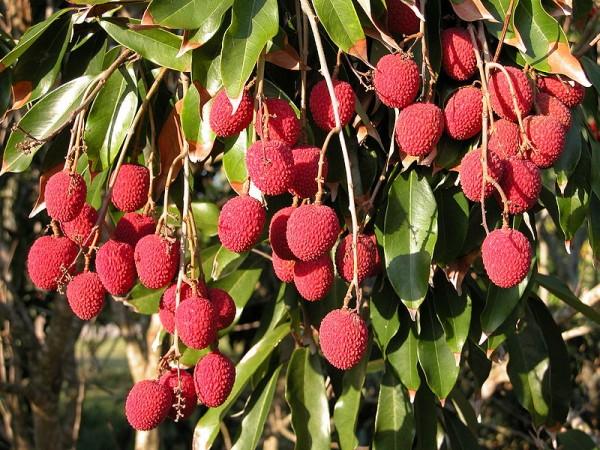
The mystery behind the outbreak of a serious illness in the city of Muzaffarpur in Uttar Pradesh seems to have been finally solved.
With the increase in temperatures every year in mid-May, children woke up with a loud cry in the morning despite having been healthy just the night before forcing their parents to rush them to the hospital immediately. The youth started having seizures and slipped into comas with around 40 percent of them losing their lives, the New York Times reported.
However, the outbreak always ended with the onset of the monsoon season in July every year just as suddenly as it began.
Investigations into this mysterious outbreak of an unknown illness began in 1995. Options like heat stroke, infections carried by rats, bats or sand flies and pesticides used in the region's popular lychee orchards were attributed to as the reason behind the illness.
Investigators also discovered that the illness only affected one child instead of occurring in clusters. In most cases, siblings would not be struck by the illness. Soon, the country's National Center for Disease Control and the India office of the Center for Disease Control and Prevention in Atlanta, in a joint investigation that was published in the British medical journal The Lancet Global Health on Tuesday, found out what was causing the outbreak of this deadly illness.
Turns out the lychee fruit, if eaten by malnourished children on an empty stomach, was guilty of causing the outbreak in the city, NYT reported.
"It was an unexplained illness for so many years. This is kind of emblematic of why we collaborate, to build this kind of systematic approach," Padmini Srikantiah, a senior epidemiologist with the CDC and the senior author of the paper, told NYT.
The Lancet article mentions a medical detective story that lasted two years with epidemiologists, like Dr Rajesh Yadav, who moved to Muzaffarpur three years ago, closely examining the lives of hundreds of children affected by the illness and trying to understand everything they had eaten, drunk and breathed.
"It was a very intense situation, because we witnessed children dying in front of our eyes every day, as soon as they arrived at the hospital," Dr Yadav, who works with the CDC in Atlanta, told NYT, adding that it was specifically difficult to interview parents, several of whom had carried their convulsing or comatose children for hours to reach the hospital.
"They were in a kind of panic. Their children were dying, and it was an unknown thing," Dr Yadav further added.
Investigators found several clues that led them to conclude that the lychee fruit was the reason behind the outbreak of the illness.
Lack of evidence of children having infections
Doctors, for 20 years, failed to establish whether an infection caused the disease. The illness usually led to acute brain swelling known as encephalopathy. Upon checking old records, they were surprised to find that children did not spike a fever, when the disease struck the region the previous year. Spinal fluid samples were examined only to find that the children struck by the illness did not show increased counts of white blood cells, which indicates that the human body is fighting infection.
Low blood sugar levels in victims
Researchers collected biological samples of over 300 children and unexpectedly found that several of the affected children had low blood sugar levels. Children with low levels of blood glucose were twice as likely to die, Dr Srikantiah told NYT.
"It seemed to be a little signal. One of the things we heard multiple times from the children's mothers was that they didn't really eat dinner properly," she added.
Outbreaks associated with the ackee fruit
According to the news report, someone mentioned "Jamaican vomiting sickness" during a conference call with colleagues in Atlanta in 2013. The illness, which struck West Indies, caused brain swelling, convulsions and altered mental states in children for several decades.
The illness was found to be related to hypoglycin — a toxin that is found in the ackee fruit and prevents the body from synthesising glucose, which leads to acute hypoglycemia or low blood glucose levels.
"It had been going on for a decade, if not a century, before people really figured out what it was. Now, the grandmothers and the mothers teach their kids, 'Don't eat the unripe ackee fruit'," Dr Srikantiah told NYT.
Laboratory tests, in 2014, were able to establish that lychees contain high levels of hypoglycin and a similar toxin called methylenecyclopropyl glycine (MCPG).
Muzaffarpur produces around 70 percent of the country's lychee harvest. According to Dr Srikantiah, "you really couldn't go 100 meters without bumping into a lychee orchard" in the villages affected by the outbreak. Children often consumed unripe lychees or ones that had fallen to the ground despite the orchards being guarded by caretakers. It was difficult to believe that lychees could cause the outbreak as everyone in the villages consumed the fruit.,
Victims had huge metabolic imbalances
CDC laboratories, in 2015, developed a test to measure the hypoglycin levels in urine which led to the discovery of huge abnormalities in the victims.
"The folks in the genetic labs said 'We haven't seen anything like this'. This was clearly abnormal," Dr Srikantiah told NYT.
Following the revelation in 2015, health officials urged parents to first feed their children an evening meal and also restrict their consumption of lychees. The number of reported cases drastically went down to below 50 from hundreds within two seasons.

















